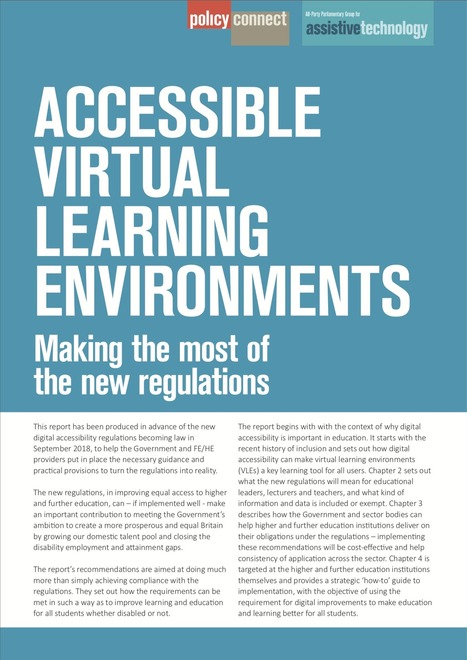Accessibility is a big deal. We include statements about accessibility in our syllabi and on our institutional websites. We also need to ensure that we comply with the Rehabilitation Act of 1973, the Americans with Disabilities Act of 1990 (ADA), the Americans with Disabilities Act Amendments Act of 2008 (ADAAA), and Section 508 of the Rehabilitation Act, as amended in 1998, and that learners with disabilities have “equal access” to online course content.
Research and publish the best content.
Get Started for FREE
Sign up with Facebook Sign up with X
I don't have a Facebook or a X account
Already have an account: Login
Literacy in a digital education world and peripheral issues.
Curated by
Elizabeth E Charles
 Your new post is loading... Your new post is loading...
 Your new post is loading... Your new post is loading...
|
|














